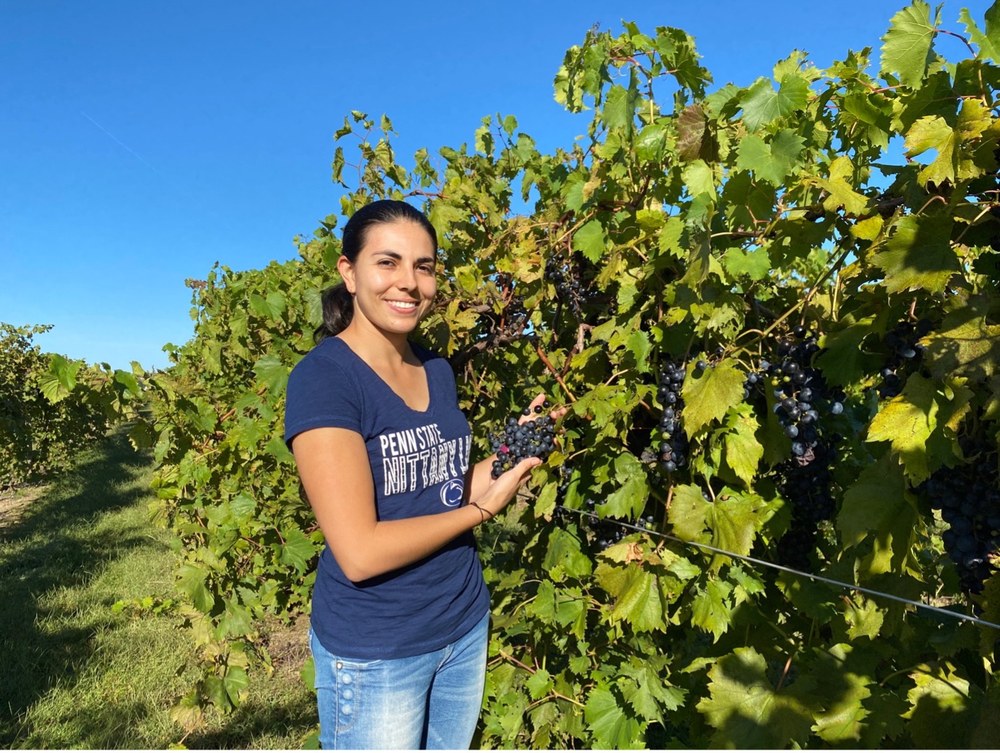This is the fourth of ten short news articles written by students, during the professional development class of Fall 2022, about each other's research.

Laura Laiton Jimenez
Student Research Spotlight - Laura Laiton Jimenez
By Daniel Bliss
Strolling through a vineyard on a warm, sunny afternoon, swirling a glass of sparkling perfection, is for many the model of well-being. Yet all is not as it seems. Amongst the tangled leaves and spiraling tendrils of vines, the grapes are under attack. Sinister bacteria lie in wait, searching for flaws in the grapes’ armor to exploit. Fungi ooze over the ripe fruit’s skin, leaving a mass of sticky, rotten pulp in their wake. Insects worm their way through bunches of prized berries, wreaking havoc as they go. To make matters worse, recent research suggests that these enemies may have teamed up.
Laura Laiton Jimenez, a master’s student at Penn State University, is studying the complex interactions between the various pests found in vineyards. She has seen and smelled first-hand the damage caused by these grape killers. By her estimation, some vineyards may have pests in as many as 90% of their grapes. Naturally, this is a big concern for grape-growers.
To address this issue, Laura will use molecular tools to identify the bacteria and fungi living in the gut of pests like the Grape Berry Moth (GBM). This will allow her to identify whether GBM contribute to the spread of detrimental fungi across vineyards. One hypothesis is that GBM larvae act as vectors for fungi, carrying them in their gut from host to host. Another possibility is that fungi take advantage of the holes larvae make while feeding, using them to evade the grapes’ outer defenses. It is Laura’s job to find out.
As a passionate microbiologist, Laura is also excited for the opportunity to get up close and personal with the bacteria and fungi present in and on unripe grapes. There is a lot to be learned from organisms which can live in such a harsh, acidic environment.
Despite some setbacks during sampling, Laura is hopeful for the future of her research. “[This] information could support the design of new pest control strategies by targeting their gut microbiome composition.” If she can establish GBM larvae as a carrier of harmful fungi and bacteria, then it may be possible to reduce the abundance of pests by attacking the larvae’s guts. Fewer pests is beneficial for growers, resulting in less crop damage and greater profitability.
So the next time you find yourself in a beautiful vineyard, take a look at the grapes around you, and remember the struggle they, and their growers, are going through to provide us with sweet refreshment. And if you happen to be sipping a glass of wine, say cheers to Laura for making it happen.
Laura is advised in her research by Dr. Flor Edith Acevedo, Assistant Professor of Entomology at Penn State University. Laura is supported by a Graduate Fellowship from the Penn State Insect Biodiversity Center

